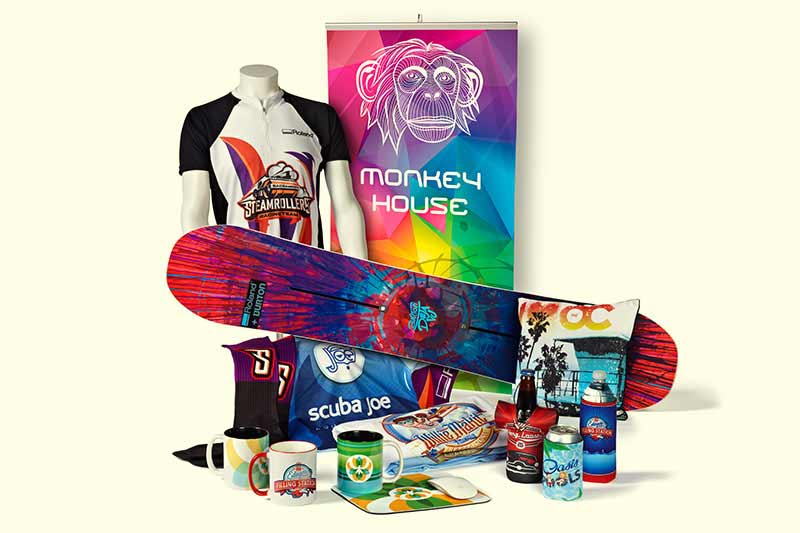






 It is clear that Roland DG has dominated the wide-format digital inkjet print sector for more than 20 years; a brand globally recognised by print service providers. But, how is Roland technology being used in the industrial print sector? And what is unique about the Roland way?
It is clear that Roland DG has dominated the wide-format digital inkjet print sector for more than 20 years; a brand globally recognised by print service providers. But, how is Roland technology being used in the industrial print sector? And what is unique about the Roland way?
Visiting the Creative Centre at Roland DG’s UK office near Bristol gave me a fascinating insight into the huge array of applications and ways in which ‘industrial print’ customers are putting Roland DG technology to use.
With customers ranging from Formula 1 teams to greeting card manufacturers (and pretty much everything in between), although perhaps less high profile, Roland has an established and proven track record in the industrial print sector. Roland technology is most commonly used at either ‘end’ of the manufacturing process; either for the creation of prototypes, mock-ups and proofs at the start of the product design process or as a customisation solution for functional or decorative print purposes, at the end of the manufacturing process.
Of particular interest within the industrial print sphere is Roland’s VersaUV range of UV-LED printers and ECO-UV inks. Ranging from desktop flatbed devices through to larger belt-driven and flatbed solutions, the VersaUV range enables direct print onto an incredible range of objects and substrates; from plastics, metals and glass, to leather, canvas and much more besides. The technology is being used across a wide range of industries for functional printing on control panels, dials and fascias as well as decorative applications, including the customisation of corporate goods, interior décor items, accessories, apparel and more.
Packaging companies are also harnessing Roland’s VersaUV and eco-solvent print / print and cut technology in the production of mock-ups. Eco-solvent devices such as the TrueVIS printer / cutters have an impressively wide colour gamut for realistic colour proofs and VersaUV printers are used to emulate high-profile, deep embossing and hot foil embossing. ECO-UV ink can be used to either block out or enhance metallic cards and foils to create unique and impressive special effects and even Braille.
Roland’s product portfolio also includes 3D technology – both 3D printing and subtractive milling- which complement the UV colour technology; particularly with packaging prototyping where physical models can be milled, or formed from milled moulds, and coloured graphics can then be direct printed. Roland’s mills are also widely used for creating moulds, physical prototype models and jigs for accurate larger-production printing.
A key area which sets Roland apart from other manufacturers is their Digital Yatai manufacturing process which derives from the Monozokuri philosophy, whereby an individual or small team assembles a single machine, from chassis to completion, using computer-aided assembly. The philosophy not only covers the streamlined manufacturing processes of research & development, procurement and production, it goes deeper; Monozokuri reinforces the craftsmanship involved in highly skilled engineers creating complex high-tech machinery
No huge production lines or noisy manufacturing environment. Instead, precision engineering quality is achieved by an assembler taking full ownership of the manufacturing process. In fact, the machines are described as individually handmade to exacting engineering standards with unerring care and attention.
This combination of technology and skill ensures the devices leaving the factory gates have been made with the upmost care, attention and accuracy, driving Roland DG’s reputation of reliability amongst its loyal end-users.
To find out more, visit the Roland DG booth at InPrint 2017 and see in action Roland‘s advanced UV-LED printers, used by professionals worldwide for a host of industrial applications, including decorative and functional printing, packaging prototypes and more.
Prepared on the basis information from Roland